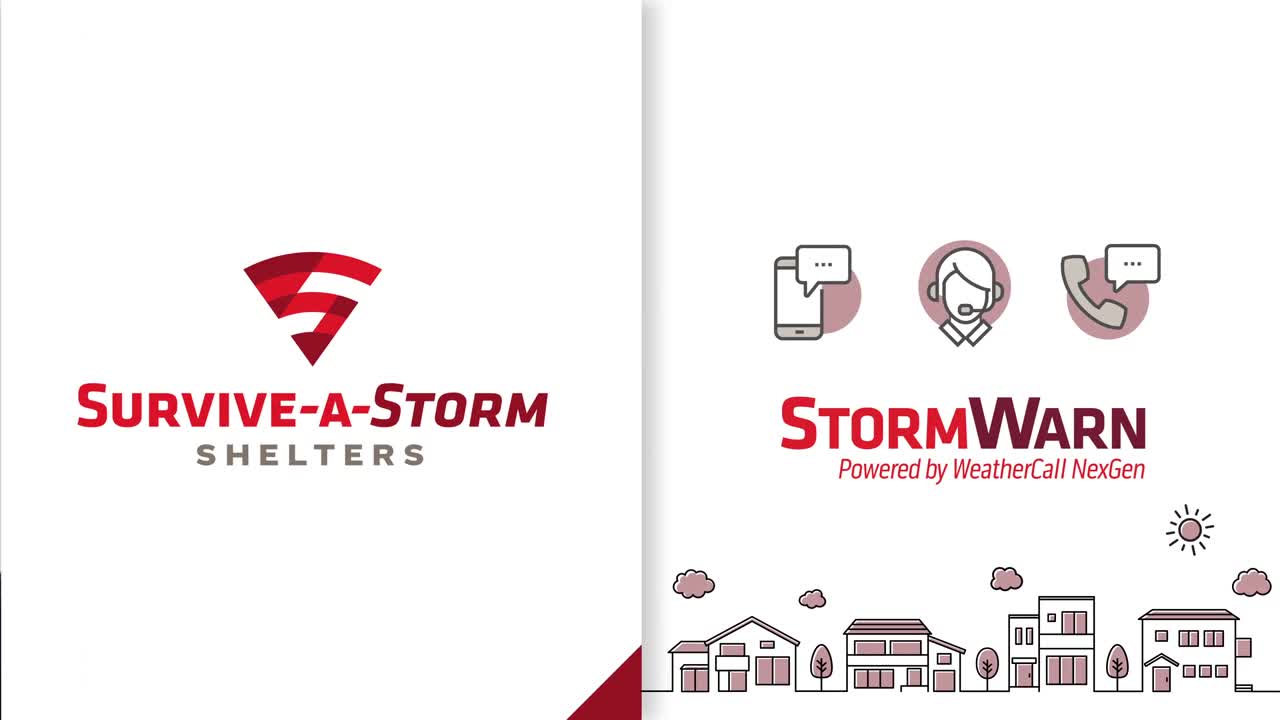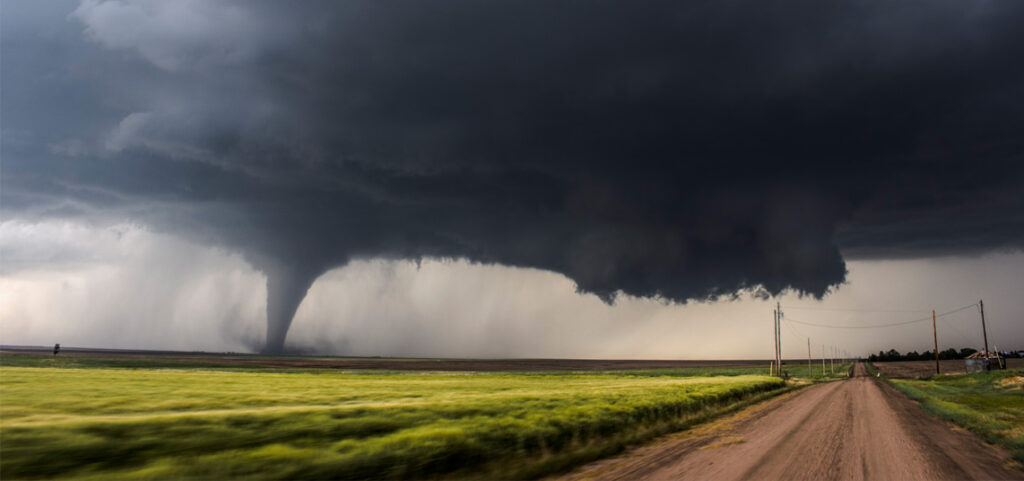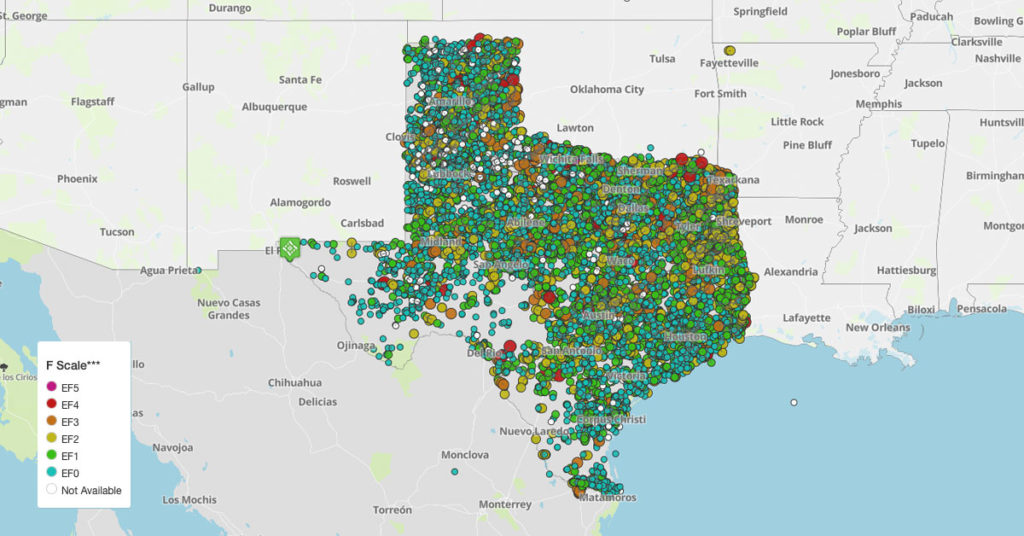Tornadoes are a frequent occurrence in many parts of the United States, but few areas are as familiar with their devastating power as Texas. The state's location in Tornado Alley, combined with its large size and varied geography, makes it a hotbed for tornado activity. Every year, Texans face the threat of twisters that can appear suddenly, with little warning, and cause widespread damage to homes, businesses, and communities. Here are some basic facts about tornadoes and Texas:
- Tornado Alley is a region of the United States, that experiences a high frequency of tornadoes. Texas is a major part of Tornado Alley.
- Tornado Watches are frequently issued for Texas, indicating that conditions are favorable for the formation of tornadoes and advising people to be prepared to take action if necessary.
- When a tornado is spotted or imminent in Texas, the National Weather Service issues a Tornado Warning and advises people to take shelter immediately.
- A Tornado Emergency is an alert issued by the National Weather Service that indicates a tornado is confirmed on the ground and poses a significant threat to life and property.
- The Enhanced Fujita Scale rates the intensity of tornadoes based on the damage they cause, ranging from EF0 (weak) to EF5 (violent). Texas has experienced some of the most powerful tornadoes in U.S. history, including a 1999 EF5 tornado outbreak that was one of the most devastating tornadoes in Texas history with estimated wind speeds of up to 318 miles per hour.
- A Hook Echo is a radar signature that appears on the southwestern part of a supercell thunderstorm and indicates the possible presence of a tornado. The May 27, 1997 tornado outbreak in North Texas, which devastated the town of Jarrell, was notable for the presence of a classic hook echo on radar.
- Wall clouds are a common sight in Texas, often preceding the formation of tornadoes. They appear as a lowered cloud formation.
- Texas is particularly prone to tornadoes because of its frequent occurrence of supercell thunderstorms, a type of thunderstorm with a rotating updraft that can lead to the formation of tornadoes. Another occurrence in Texas are tornadoes formed by hurricanes.
- When a tornado strikes in Texas, one way that meteorologists can confirm its presence and intensity is by observing a debris ball, which is a distinct radar signature that indicates the presence of debris being "lofted" by the tornado.
- Texas often experiences Vortex Signatures on radar that indicate the presence of strong rotation within a thunderstorm and the potential for tornado formation.
Documented Texas tornadoes since 1950

Know when severe weather is about to strike and when it's time for you to take shelter with our StormWarn texting program.

Preparing for Texas Tornadoes
Tornadoes are a significant weather hazard in Texas, with the state experiencing an average of around 140 tornadoes per year. Given the frequency and potential for damage caused by these storms, it is crucial that residents of Texas take tornado preparation seriously.
One of the most important steps in tornado preparation is having a plan in place for how to respond in the event of a tornado. This includes knowing where to go to seek shelter, such as a basement, storm or tornado shelter, or an interior room on the lowest level of a building. It's also important to have emergency supplies on hand, such as food, water, and first aid supplies. (Enough for a few hours or overnight.) It is also important to have a means of receiving tornado warnings, such as a weather radio or smartphone app, and to stay tuned to local weather reports during times of severe weather.
In addition to individual preparation, communities in Texas can also take steps to prepare for tornadoes. This includes having emergency response plans in place, such as evacuation routes and designated emergency shelters, and conducting drills to ensure that residents know what to do in the event of a tornado. Local authorities can also work to improve infrastructure and building codes to make homes and buildings more resilient to tornadoes, such as reinforcing roofs and installing storm shutters.
Tornadoes are a natural hazard, but with proper preparation and planning, we can work to reduce their impact and keep ourselves and our communities safe.

Tornado Shelters In Texas
Finding public tornado shelters in Texas can be challenging as there is no centralized database or list of all public tornado shelters in the state. However, there are a few resources you can use to help locate public tornado shelters in Texas.
- Contact your local emergency management office to ask about public tornado shelters in your area. They may have information about shelters located in community centers, schools, or other public buildings.
- There are four chapters of the American Red Cross in Texas that may have information on public tornado shelters. Contact your local chapter or visit their website for more information.
- The Federal Emergency Management Agency (FEMA) maintains a list of safe rooms and shelters across the country, including those in Texas. Visit the FEMA website to search for shelters in your area.
- In Texas, with its large coastal area, not all tornado shelters will be underground (a common misconception). Above-ground tornado shelters are very safe, even at the strongest EF5 levels.
It's important to note that not all public buildings are designated as tornado shelters, so it's essential to check with local officials to confirm the location and availability of a public tornado shelter.
Additionally, it's important to have a plan in place for seeking shelter during severe weather events, regardless of whether or not you have access to a public tornado shelter.
Tornado Safety Tips for Texans
- Stay informed: Monitor weather reports and stay tuned to local news and radio for updates on severe weather conditions, especially during tornado season (March to May).
- Have a plan: Develop a tornado safety plan for your family or workplace, including a designated safe room or shelter and a communication plan. Practice your plan a few times a year.
- Seek shelter: If a tornado warning is issued or you observe a tornado, seek shelter immediately in the place that you have planned; it could be a storm shelter, basement, or the lowest level of a sturdy building. If you are in a vehicle, do not try to outrun the tornado. Instead, seek shelter in a sturdy building or lie flat in a ditch or low-lying area away from trees and cars.
- Protect yourself: If you're in an area that isn't actually an approved storm shelter, it's a good idea to cover your head and neck with your arms and a blanket or jacket to protect against flying debris. Wear sturdy shoes to protect your feet from broken glass and other hazards.
- Avoid windows: Stay away from windows, doors, and outside walls, and put as many walls as possible between you and the outside. Outside of an NSSA-approved storm shelter, a lower-level room, preferably a bathroom, is the safest place.
- Be cautious after the storm: After the tornado has passed, be cautious of downed power lines and other hazards. Do not enter damaged buildings until they have been inspected by authorities.
- Stay alert: Even after a tornado has passed, be alert for signs of additional tornadoes or severe weather, as they can often occur in clusters.
- Know your evacuation routes: In the event of a large-scale tornado or severe weather event, be familiar with evacuation routes and follow instructions from emergency personnel.
By following these tornado safety tips, you can help protect yourself and your loved ones from the dangers of tornadoes in Texas.

FAQs About Tornadoes in Texas
Q. Are March through May the only months to worry about tornadoes in Texas?
A: It's true that tornado season in Texas typically runs from March through May. However, there is a second season in the fall from October to November. It's a good idea for Texans to be prepared for tornadoes year round.
Q. What should I do if a tornado warning is issued in my area?
A: When a tornado warning is issued, that means that a tornado has been spotted, or is very likely. The whole warning area may be larger than the actual area in danger, which results in false alarms and hesitance to take shelter. When an alert is issued by the National Weather Service, there is typically a "polygon area" - this is the area that must seek immediate shelter. If you're in the polygon area, go to your storm shelter or a safe interior room on the lowest level of a sturdy building. Stay away from windows and exterior walls.
Q. How can I find a storm shelter in Texas?
A: You can search for storm shelters in Texas on the FEMA website or the Texas Department of Emergency Management website.
Q. Do I need a storm shelter if I live in an apartment or mobile home park?
A: Yes, you definitely need one if you live in an apartment or mobile home! Check with your leasing office to find out where you should shelter in case of a tornado. If the leasing office doesn't have a designated safe area, it's a good idea to consider purchasing a portable storm shelter.
Q. How much does a storm shelter cost?
A: The cost of a storm shelter can vary depending on the size, type, and installation requirements. In-ground shelters can range from $3,000 to $10,000, while above-ground shelters can cost $4,000 to $20,000.
Q. What should I keep in my storm shelter?
A: Most tornado emergencies last only a few hours, but some people choose to stay in their shelters overnight during a tornado watch. Whatever your plan is, you should keep a first aid kit, a small supply of non-perishable food and water, blankets, a battery-powered radio, and a flashlight. Also, it's a good idea to be sure that everyone inside has a pair of shoes and chargers for their devices.
Q. How long can I stay in a storm shelter?
A: You should be prepared to stay in a storm shelter for several hours if necessary until it is safe to come out. Make sure you have enough food, water, and supplies to last that long.
Q. What is the difference between a tornado watch and a tornado warning?
A: A tornado watch means that conditions are favorable for tornadoes to form in the area, while a tornado warning means that a tornado has been spotted or is imminent and you should take immediate shelter.
Q. What should I do if I am caught in my car during a tornado?
A: If you are caught in your car during a tornado, try to drive to the nearest sturdy building and seek shelter. If there is no building nearby, pull over and park the car. Stay in the car with your seatbelt on and put your head down below the windows. Never attempt to outrun a tornado.
Q. How can I prepare my home for tornado season?
A: You can prepare your home for tornado season by securing loose outdoor objects, trimming trees and branches near your house, reinforcing your roof and windows, and having a plan in place for where to go in case of a tornado.
Emergency Management Offices in Texas
Finding accurate and timely emergency management information is essential for Texans preparing for disasters. Below is a list of contact numbers for emergency management offices across Texas. While we strive to provide accurate information, we cannot guarantee the completeness or accuracy of these details. Contact the local emergency management offices directly for the most accurate information.
Texas Division of Emergency Management (TDEM)
Primary Contact:
- Address: 2401 S 35th Street, Suite C-51, Austin, TX 78741
- Mailing Address: PO Box 53365, Austin, TX 78763-3365
- Phone: 512-424-2208
- Fax: 512-424-7160
- Email: [email protected]
- TDEM Contact Page
Regional Emergency Management Offices in Texas:
Bexar County Office of Emergency Management
- Phone: 210-335-0300
- Address: 8130 Inner Circle, San Antonio, TX 78235
- Bexar County OEM
Austin-Travis County Emergency Management Division
- Phone: 512-974-0461
- Address: 4201 Ed Bluestein Blvd, Austin, TX 78721
- Austin-Travis County OEM
Harris County Office of Homeland Security & Emergency Management
- Phone: 713-881-3100
- Address: 6922 Katy Road, Houston, TX 77024
- Harris County OHSEM
Dallas Office of Emergency Management
- Phone: 214-670-4275
- Address: 1500 Marilla Street, Room L2AN, Dallas, TX 75201
- Dallas OEM
El Paso Office of Emergency Management
- Phone: 915-832-4400
- Address: 911 Raynor St, El Paso, TX 79903
- El Paso OEM
San Antonio Office of Emergency Management
- Phone: 210-206-8580
- Address: 1901 S Alamo St, San Antonio, TX 78204
- San Antonio OEM
For more information and resources, visit:


